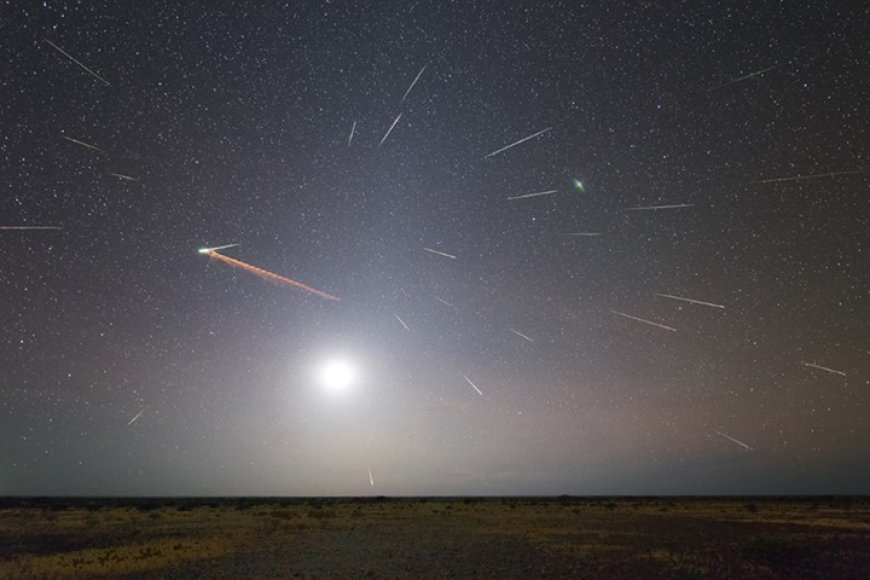May 2025: Celestial events to light up the night sky

May 2025 has a couple of fun astronomical events that may have you looking to the skies. May is when we'll have opportunities to see a meteor shower, the flower moon, 2 globular star clusters, and a small alignment.
Up first is the ETA Aquarids meteor shower. This meteor shower began in late April and will last through late May. The shower reaches its peak intensity tonight when up to 10 meteors per hour could be visible.
The Aquarids meteor shower is known for its long light trails. This is in contrast to the familiar quick burst of light moving fast across the sky.
A drawback for viewing in the Ozarks, however, is that the streaks will be low on the horizon to the east. Another inhibitor to viewing will be light pollution, so be sure and get away from city lights. Most meteors in the Aquarid should be visible with the naked eye under good viewing conditions. Good news! Skies are forecast to be clear tonight.
Happening on May 11, a globular cluster will be visible in our skies. A globular cluster is a dense, spherical collection of stars, sometimes millions strong. This particular cluster is known as Misseir 5, or M5.
The M5 cluster will reach its highest peak in the sky on May 11. The cluster will be 25,000 light years away, so a telescope or pair of binoculars will be needed. However, a nearly full moon will make viewing even more difficult. A second globular cluster, M4, will be visible on May 28, however, this cluster isn't as bright.
Coming up next is a full moon known as the flower moon. The full moon is called the flower moon simply because of the significance of flowers blooming in May. Other names for the full moon in May are the milk moon, budding moon, and planting moon. The full moon happens on May 12.
The moon phase continues to shrink after May 12 and will be a crescent moon by May 22. This crescent moon will be between two planets: Venus and Saturn. Venus will be to the left of the moon and Saturn will be positioned to the right. Venus will be much brighter, but Saturn may barely be visible with the naked eye. A pair of binoculars will be helpful in finding Saturn. Look east roughly a half hour before sunrise to see this lineup.
The moon will be absent from the skies on May 26 when it starts a new moon cycle. The moonless skies on the night of May 26 will foster the best stargazing conditions for the month, granted skies are clear of clouds.
What's Your Reaction?
 Like
0
Like
0
 Dislike
0
Dislike
0
 Love
0
Love
0
 Funny
0
Funny
0
 Angry
0
Angry
0
 Sad
0
Sad
0
 Wow
0
Wow
0


































